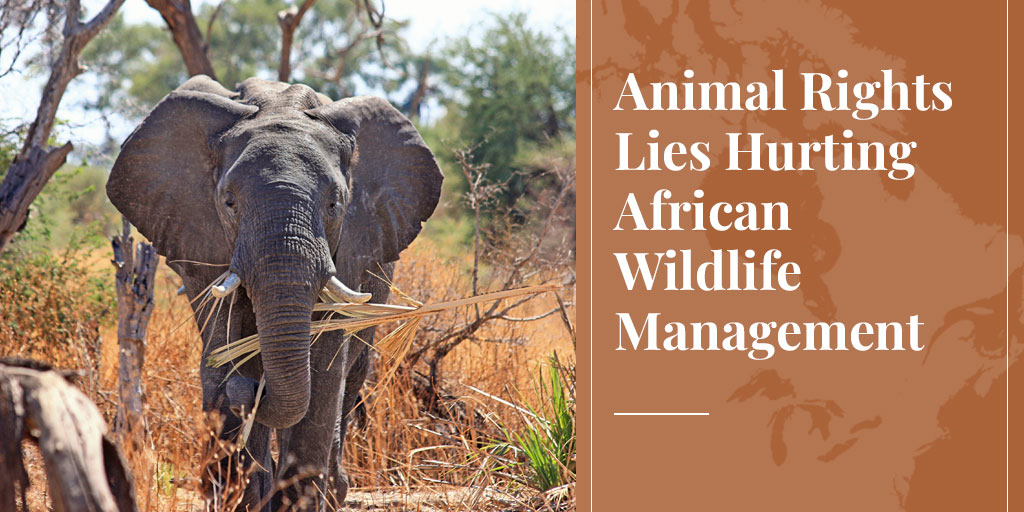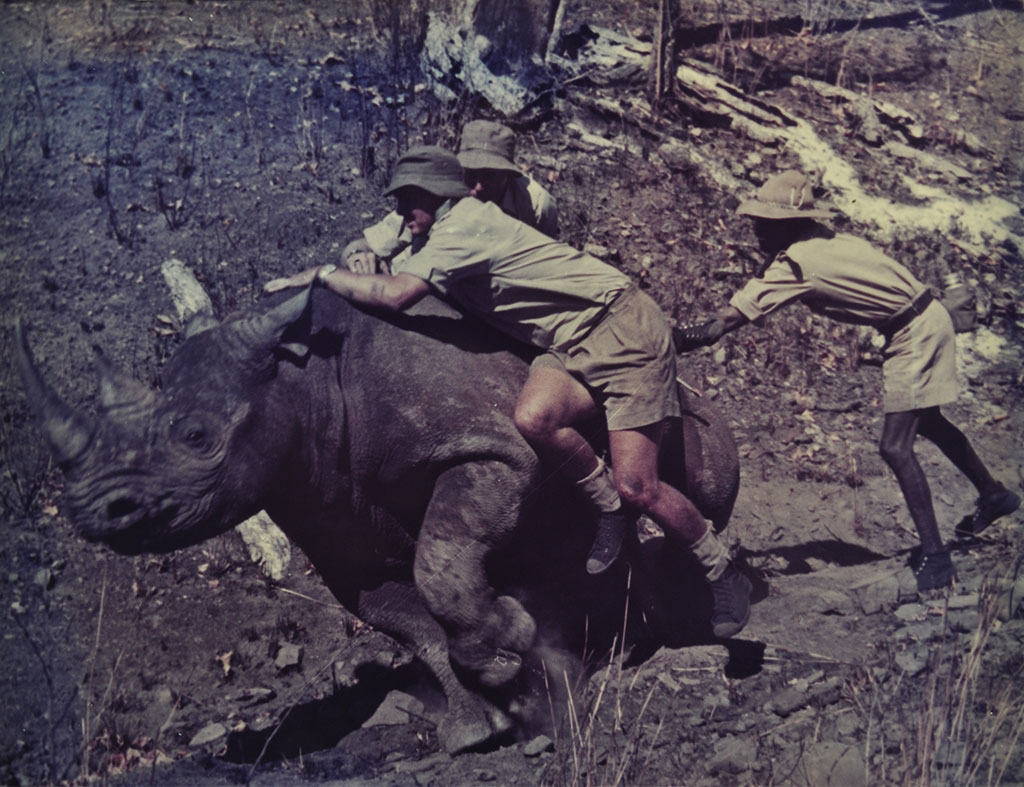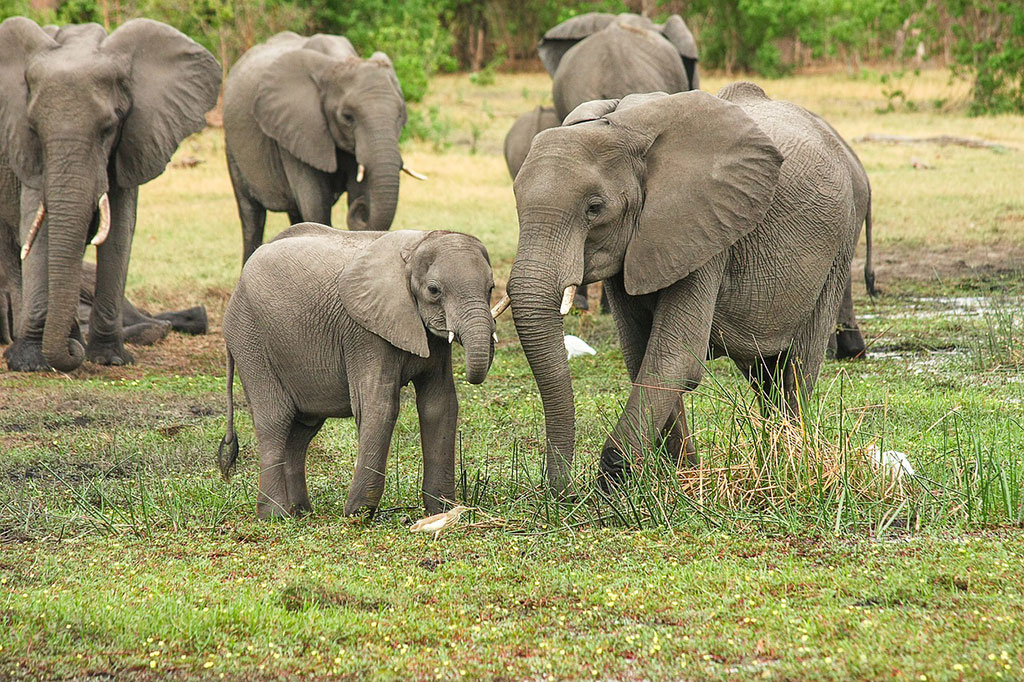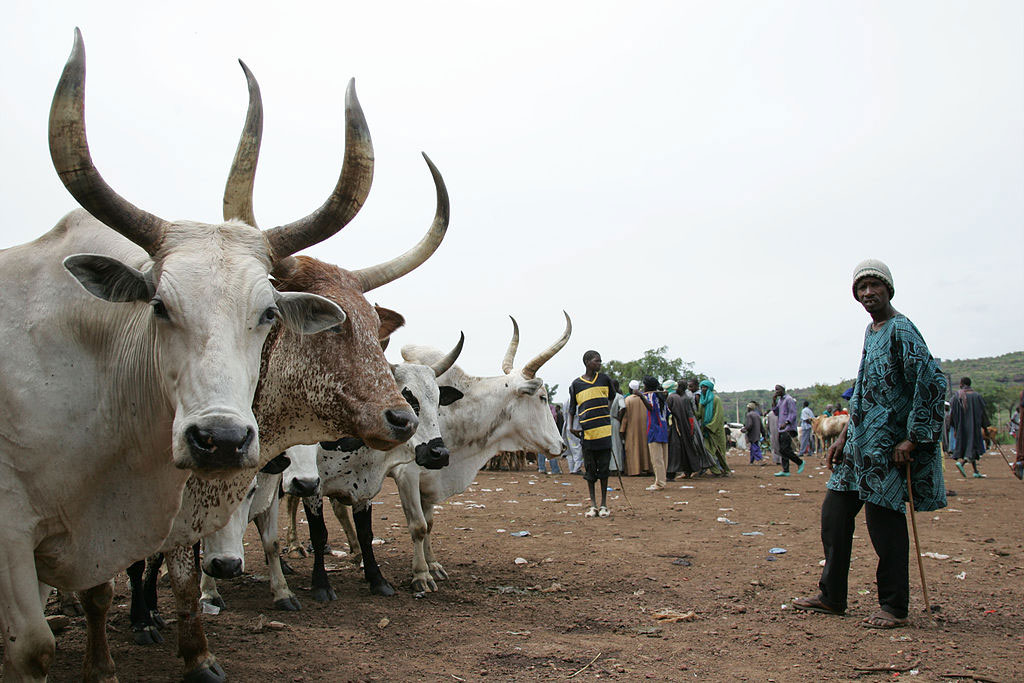
(Editor's note: Wildlife management in Africa may seem far removed from managing beavers and coyotes in North America, but combatting misinformation from animal rights groups is a challenge now being faced everywhere. Photo: The True Green Alliance.)
The scourge of animal rights-ism permeates the whole world. It is as rife in Africa as it is in North America and the rest of the world. I am an 80-year-old ex-game warden with 60 years of experience in the management of Africa’s national parks and big game animals. My particular interests concern maintaining the health and vigour of national park habitats, and the proper management of elephants and black rhinos; and I pull my hair out at the blatant lies that the animal rightists tell innocent nature lovers, the world over, about both species.
The most recent one is that the African elephant is facing extinction. We are told that unless the world stops the sale of ivory, stops the legal hunting of elephants, and stops their lethal management (culling), the elephant will slide down the slippery slope to extinction. This comes from people, remember, who live in the First World, who have never seen an elephant in their lives, and who have no accountability for whatever bad recommendations they make to “save” the African elephant. Meanwhile, the opinions of experienced elephant managers, like myself, are pushed aside as “contrived fabrications”. And the whole world believes them, not the likes of me!

The elephants of Africa occur in 37 countries, or “range states”, and form 150 distinct populations. The habitats vary widely, including montane forests, deciduous forests of many kinds, savannah (treed grasslands), grasslands, thornveld, dry bushveld, teak forests, swamps, and true deserts. The rainfall in these different habitats varies from practically no rainfall at all to over 200 inches a year. Their interactions with humans are sometimes hostile – both ways – and sometimes docile. Some are poached, others are not poached. And the natural environmental pressures that each population has to endure due to variances in vegetation type, altitude, temperature and rainfall, are never the same. Consequently, the management needs of each of these populations have to be assessed on their own merits, and a management strategy, that is entirely focussed on one population at a time, has to be applied.
If this requirement is not complex enough, the management strategy that is applied to each population has to take cognizance of each population’s “safety status”, which is determined by the elephant carrying capacity of the population’s habitat, measured against the number of animals in the population. Thus, if the sustainable carrying capacity of the habitat is 2,500 elephants and the population numbers 50,000 (as is the case with Zimbabwe’s Hwange National Park today), the population is determined to be excessive (grossly excessive, in this case). If the sustainable carrying capacity is 10,000 and the population numbers 8,000 to 10,000, the population is deemed to be safe because it is “inside” (below) the carrying capacity limitation. And if the carrying capacity of a habitat is determined to be 10,000 and the population number is only 1,000 and falling, that population is deemed to be unsafe.
A Complex Science

Safe populations require conservation management (annual culling) to make sure they don’t grow to the extent that they exceed the habitat’s carrying capacity. And unsafe populations need preservation management (protection from all harm), with the purpose of helping the population to return to a safe status. Excessive elephant populations require drastic and immediate population reduction. This is for the sake of the elephants themselves, for the health of their habitats (which excessive populations totally destroy), and for the maintenance of the biological diversities of our national parks. Indeed, the first action that needs to be taken on an excessive population is to reduce its numbers as quickly as possible, by no less than 50%.
SEE ALSO: Thousands of baby elephants starve every year – Too many for national parks. By Ron Thomson, True Green Alliance, Apr. 21, 2019.
All this will tell you that elephant management is a complex science.
It will also tell you that labelling the African elephant as an “endangered species” is simply a very stupid act. The very name “endangered species” implies that every single elephant population is unsafe, declining, and facing extinction, and that they thus all deserve to be managed according to the prescriptions of preservation management. But that is not the case at all.
Lots of elephants in West Africa are unsafe (due entirely to bad governance), many in East Africa are (now) safe, and every single elephant population in southern Africa (south of the Zambezi and Cunene Rivers) is grossly excessive. So, if an elephant population is declared to be endangered – and all its populations are subjected to preservation management – its excessive and safe populations will all be subject to total mismanagement. All the elephant populations of southern Africa exceed the carrying capacities of their habitats by between 10 and 20 times the numbers that they should be! For example, there could be as many as 200,000 too many elephants in the Botswana mega-elephant-population.
And yet the animal rightists continue to tell these lies in order to fraudulently make money out of a gullible public; the press continue to support them; and the governments of the world allow all this misrepresentation to happen. It is a crazy world that we live in – because we know that we are right and the animal rightists are wrong. All we can do is keep trying to create a properly informed public because they are the people who can make a difference.
Sustenance Through Wildlife, Not Livestock

There is a human population explosion in Africa, and the realities are as follows. There were 95.9 million people living in sub-Saharan Africa in the year 1900. By 2000, that number had increased to 622 million. And if the same rate of population increase continues throughout the 21st century, there will be over 4 billion people living in this same region by 2100. And they will all be trying to eke out a living from this finite continent, with its finite resources.
There will, by the year 2100, certainly be no wild land left unoccupied by humans. And in their never-ending search for a means to survive, Africa’s rural people will have, by then, extirpated all wildlife outside the national parks (and maybe inside the national parks, too). And they will be entirely dependent on domestic animals and cultivated crops for their survival.
By the year 2100, therefore, the only animals that are certain of survival will be domestic animals – cattle, sheep and goats. Why? Because the rural people of Africa cannot afford to have them become extinct.
Meanwhile, their wild equivalents – elephants, buffaloes, lions, leopards, rhinos, etc. – are potentially far more valuable than livestock, and people could make infinitely more money out of their sustainable use than they could ever hope to make from cattle, sheep and goats.
People like me (and there are many of us) are therefore striving to get Africa’s rural people to convert their means of earning a living, from livestock to wildlife. Only in this way can we be sure that the elephants, buffaloes, lions, leopards and rhinos of this continent will survive this century.
It is ironic, therefore, that the animal rightists, by insisting that man cannot and should not be able to “make money out of wildlife”, could be the very people who cause Africa’s wildlife to become extinct.
SEE ALSO: The elephant’s Armageddon (1). By Ron Thomson, True Green Alliance, Oct. 16, 2017.
SEE ALSO: The elephant’s Armageddon (2). The elephant is not facing extinction. By Ron Thomson, True Green Alliance, Oct. 19, 2017.










